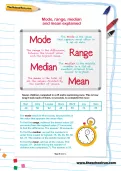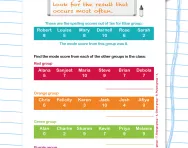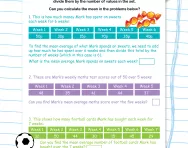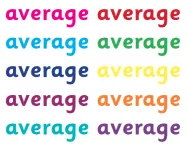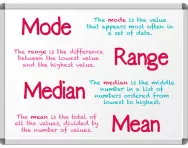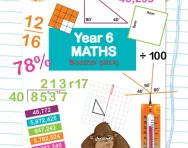Important update from TheSchoolRun
For the past 13 years, TheSchoolRun has been run by a small team of mums working from home, dedicated to providing quality educational resources to primary school parents. Unfortunately, rising supplier costs and falling revenue have made it impossible for us to continue operating, and we’ve had to make the difficult decision to close. The good news: We’ve arranged for another educational provider to take over many of our resources. These will be hosted on a new portal, where the content will be updated and expanded to support your child’s learning.
What this means for subscribers:
- Your subscription is still active, and for now, you can keep using the website as normal — just log in with your usual details to access all our articles and resources*.
- In a few months, all resources will move to the new portal. You’ll continue to have access there until your subscription ends. We’ll send you full details nearer the time.
- As a thank you for your support, we’ll also be sending you 16 primary school eBooks (worth £108.84) to download and keep.
A few changes to be aware of:
- The Learning Journey weekly email has ended, but your child’s plan will still be updated on your dashboard each Monday. Just log in to see the recommended worksheets.
- The 11+ weekly emails have now ended. We sent you all the remaining emails in the series at the end of March — please check your inbox (and spam folder) if you haven’t seen them. You can also follow the full programme here: 11+ Learning Journey.
If you have any questions, please contact us at [email protected]. Thank you for being part of our journey it’s been a privilege to support your family’s learning.
*If you need to reset your password, it will still work as usual. Please check your spam folder if the reset email doesn’t appear in your inbox.
Mode, range, median and mean explained
What is the mean, range, median and mean?
The mean is what most people commonly refer to as the average. To find the mean, you add up all the numbers in a set and then divide by the total.
Here is an example of how to find the mean:
Imagine your child's test scores are 80, 85 and 90:
- You will need to add the scores: 80 + 85 + 90 = 255
Then divide by the number of scores: 255 ÷ 3 = 85
So, the mean score is 85.
The range shows the difference between the highest and lowest numbers in a set. It's a simple way to understand how spread out the numbers are.
Here is an example of how to find the range:
Using the same scores as above (80, 85 and 90):
- You can see that the highest score is 90.
- You can also see that the lowest score is 80.
You need to subtract the lowest score from the highest: 90 - 80 = 10
So, the range is 10.
The median is the middle number in a set of numbers when they are arranged in order. If there's an even number of scores, the median is the average of the two middle numbers.
Example of finding the median:
Using the scores: 80, 85, 90
- Arrange the scores in order: 80, 85, 90
You can see that the middle number is 85.
So, the median is 85.
The mode is the number that appears most frequently in a set. Some sets can have more than one mode, or no mode at all if no number repeats.
Example of finding the mode
Use the scores: 80, 85, 85, 90
The number 85 appears twice, which is more frequent than the others.
So, the mode is 85.
How will this Year 6 worksheet help your child with their maths skills?
This activity was created by an experienced educator and includes an easy-to-understand definition of each process and a clear example. Then your child will need to put their skills to the test!
Find more help and support with Year 6 maths by visiting our hub page, or try a new maths challenge such as our Fractions problem worksheet.
